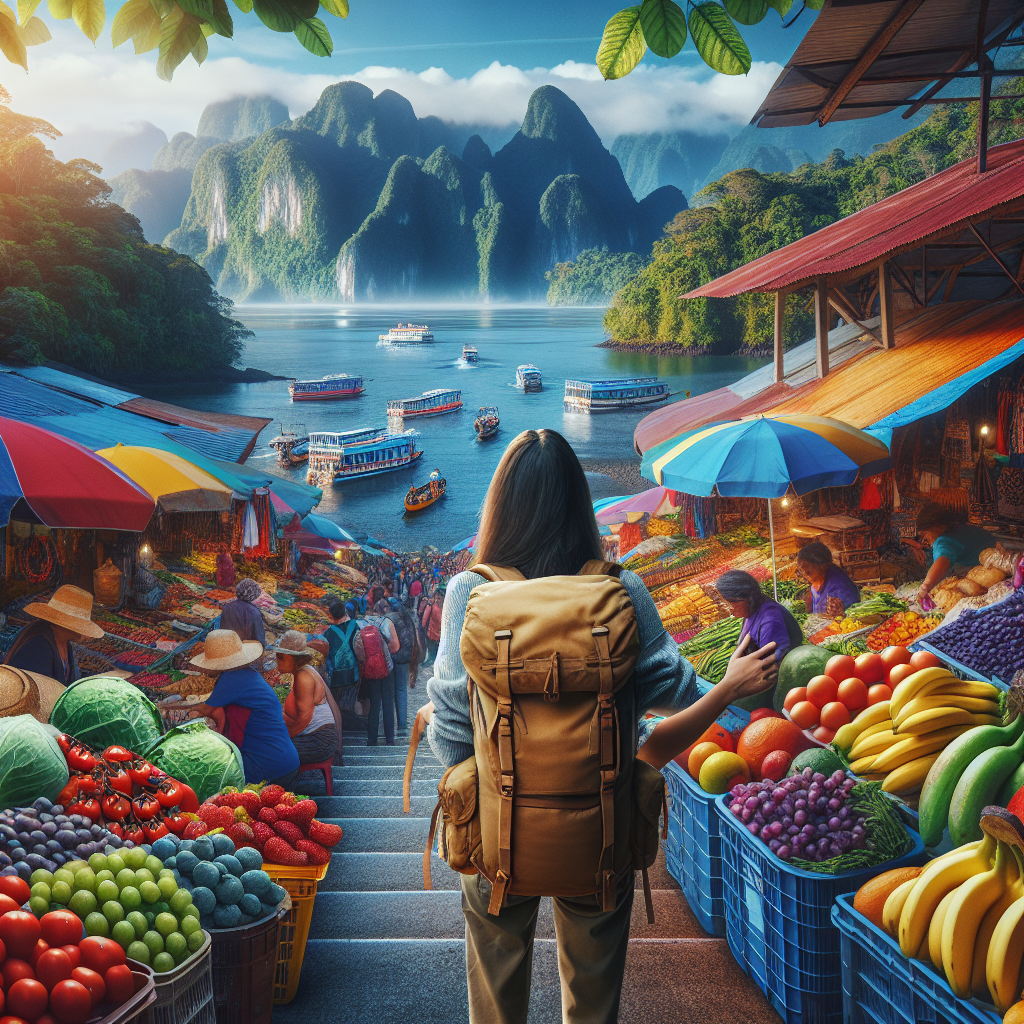Exploring Panama on a Shoestring: The Ultimate Guide for Budget Travelers
Panama, a country where the modern meets the ancient, where skyscrapers tower over lush rainforests, and two great oceans are joined by an engineering marvel, is a destination ripe for exploration. For the budget traveler, Panama offers a wealth of experiences that don’t have to break the bank. From the vibrant streets of Panama City to the tranquil islands of San Blas, this guide will help you navigate the beauty of Panama without spending a fortune.
Why Panama?
Panama stands out in Central America for its unique blend of cultures, history, and natural beauty. It’s a country where you can start your day with a coffee in the shadow of the Panama Canal, a testament to human ingenuity, and end it watching the sunset on a pristine beach. Its diverse ecosystems, including cloud forests, tropical beaches, and coral reefs, are a haven for nature lovers and adventure seekers alike. Moreover, Panama uses the US dollar alongside its own currency, the Balboa, making it a financially convenient destination for American travelers.
Getting Around on a Budget
In Panama, transportation can be both an adventure and an affordable aspect of your trip. Local buses, known as “diablos rojos” for their colorful decorations, offer an inexpensive way to get around cities and to nearby towns. For longer distances, comfortable and air-conditioned coaches connect major destinations, including a route from Panama City to David, from where you can explore the highlands of Chiriquí.
For the more adventurous, hitchhiking is relatively common and safe in rural areas, offering not just a free ride but also a unique way to meet locals. Always exercise caution and use your best judgment when hitchhiking, of course.
Affordable Accommodations
Hostels are plentiful in Panama, especially in tourist hotspots like Panama City, Bocas del Toro, and Boquete. For as little as $10-15 a night, you can find a bed in a dormitory, often with extras like free breakfast or access to a communal kitchen, which can help save on meal costs. For a more immersive experience, consider a homestay or local guesthouse, where you can enjoy authentic Panamanian hospitality.
Eating on a Budget
One of the joys of traveling in Panama is the food, and eating well doesn’t have to be expensive. Street vendors and local “fondas” (small, family-run restaurants) offer hearty portions of local dishes like arroz con pollo (rice with chicken), patacones (fried plantains), and fresh ceviche for just a few dollars. Markets are also a great place to sample local fruits and snacks at low prices. Cooking your own meals can further reduce costs, especially if you’re staying somewhere with kitchen facilities.
Free and Low-Cost Attractions
Panama is filled with activities and sights that are either free or very affordable. In Panama City, don’t miss a walk along the Cinta Costera, a waterfront promenade, or exploring the historic Casco Viejo district, a UNESCO World Heritage Site. Many of Panama’s national parks, such as Soberania National Park near the capital, charge only a nominal entrance fee for access to hiking trails and wildlife viewing opportunities.
Beaches are another low-cost highlight, with beautiful spots like Playa Venao on the Pacific coast and the Caribbean beaches of Bocas del Toro. While some islands and more secluded beaches might require a boat ride to reach, many are accessible with a small fee or even free.
Maximizing Your Experience
To truly get the most out of your budget trip to Panama, consider these tips:
– Travel during the shoulder seasons (May-June and September-November) to take advantage of lower prices and fewer crowds.
– Use apps and websites to find deals on accommodations, transportation, and tours.
– Don’t be afraid to negotiate prices, especially in markets or for taxis.
– Learn some basic Spanish phrases. While many Panamanians speak English, especially in tourist areas, knowing some Spanish can enhance your experience and sometimes even help you get better prices.
Recreating the Experience
For those who wish to bring a piece of Panama back home, consider hosting a Panamanian-themed dinner party. Prepare dishes like ceviche or sancocho (chicken soup) and decorate with vibrant colors reminiscent of the diablos rojos buses and the Kuna Yala molas (handmade textiles). Share stories of your travels or dreams of visiting Panama, creating a cultural exchange that transcends borders.
FAQ
1. Is Panama safe for budget travelers?
– Yes, Panama is generally safe for travelers, including those on a budget. As with any destination, it’s important to exercise common sense and stay informed about the areas you plan to visit.
2. Can I drink the tap water in Panama?
– In Panama City and many other parts of the country, the tap water is safe to drink. However, in some rural areas and the San Blas Islands, it’s advisable to drink bottled or purified water.
3. What is the best way to exchange money?
– Since Panama uses the US dollar alongside the Balboa, American travelers won’t need to exchange currency. For others, ATMs are widely available and offer reasonable exchange rates.
4. Do I need a visa to visit Panama?
– Visitors from many countries, including the United States, Canada, and most European nations, do not need a visa for stays of up to 180 days. Always check the latest visa requirements before traveling.
Exploring Panama on a shoestring budget is not only possible but can also be incredibly rewarding. With a bit of planning and flexibility, budget travelers can experience the best of what Panama has to offer, from its awe-inspiring natural beauty to its rich cultural heritage, all without breaking the bank.
